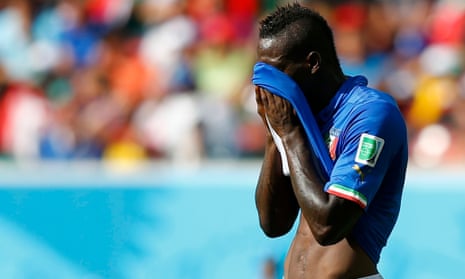It might be hard to imagine that exercise could be harming your health. It turns out that even while you’re doing something healthy, what you’re wearing while doing it could be cause for concern.
Public health advocates, including Greenpeace and European regulatory bodies that oversee chemical safety, are becoming increasingly concerned by evidence that shows a possible link between sportswear and health issues such as cancer, obesity and developmental disabilities. While toxic chemicals are a longstanding issue in various types of apparel, sportswear presents a particular problem because sweat and friction can prompt more rapid absorption of toxins into the body.
Greenpeace released a report last month cataloguing how apparel companies are failing to regulate the chemicals in the sportswear they manufacture.
The Greenpeace report comes after a slew of research over the past few years highlighting the potential health risks of various chemicals used in sportswear – primarily dyes, solvents, and polyfluorinated chemicals (PFCs), which make items water, grease and stain-proof.
In Greenpeace’s report it promoted Adidas from “greenwasher” to “trendsetter” and bestowed the less complimentary “greenwasher” title on Nike.
Following earlier findings by Greenpeace about Adidas’ previous poor performance, the company sat down with Greenpeace and committed to eliminating hazardous chemicals by 2020 and being 99% PFC-free by 2017. Manfred Santen, toxics campaigner for Greenpeace International in Germany, called this “a big step in the right direction”.
Nike spokesperson Greg Rossiter responded to the report by saying their own greenwasher title is undeserved. He said that the company phased out long-chain PFCs at the beginning of this year, requiring that all materials meet the standards laid out in Nike’s Restricted Substances List.
It was a 2014 Greenpeace report on hazardous chemicals on World Cup uniforms and fan merchandise that prompted Adidas to take action. In the report, Greenpeace found PFCs, which have been linked to health issues ranging from low birth weight to prostate cancer, throughout the Adidas and Nike items tested, as well as high levels of phthalates (a group of plasticizing chemicals, many of which have been linked to health concerns), dimethylformamide (a solvent linked to cancer and birth defects), and nonylphenol ethoxylates, which degrade into hormone-disrupting chemicals that persist in the environment.
“The concentration that we find in clothing may not cause acute toxic problems for the wearer in the short term, but in the long term you never know,” Santen said. “Endocrine disruptors, for example, you don’t know what the impact of long term exposure is on human health.”
Some items commonly used in clothing, including azo dyes and plated nickel, have been either dramatically reduced or banned outright by the EU’s Registration, Evaluation, Authorisation and Restriction of Chemicals (Reach) regulation, as well as by laws in China, India, Japan and Egypt.
In the US, specific chemical elements of textiles are unregulated. Rather, manufacturers are broadly required to properly manage emissions of various hazardous wastes, including chemicals, under the federal Resource Conservation and Recovery Act.
Santen said he hopes the consumer awareness generated by the most recent report will push companies like Nike to do more.
“That is the main reason Adidas talks to us: the middle class in China is becoming increasingly concerned about this issue and China is the biggest market for them and will be the biggest consumer market in the coming years,” Santen said. “They have to be careful not to be overtaken by Nike. Those two are in direct competition in China.”
In a 2012 report, the BEUC (the European Consumer Organization) tested the national football jerseys of nine countries – France, Germany, Italy, Poland, Portugal, Russia, Spain, The Netherlands and Ukraine – and found carcinogenic and endocrine-disrupting chemicals, including lead, in all of them. In a statement, the organization noted that these chemicals are particularly problematic in sportswear, because “sweat and movement friction can facilitate the migration of hazardous substances from the fabric to our skin”.
BEUC also criticized Reach standards. “The legal limit values contained in the Reach regulation are very often unsuitable to adequately protect consumers’ health,” the organization said. “For example in many cases the limit value is set at 0.1% of a chemical compared to the overall weight of the article. In absolute terms, this can be a lot (e.g. 0.1% of a chemical in a very heavy sofa).” Reach also fails to consider variable conditions that might prompt chemicals to be released at greater proportions.
In 2014, KEMI, the government agency that oversees chemicals and safety in Sweden, produced the most comprehensive report to date on the health impacts of chemicals in textiles. Approximately 10% of the 2,400 textile-related chemicals identified in the 142-page report are considered to be of potential risk to human health.
Of those, only about 1% are tightly regulated by Reach and even fewer are regulated in the United States.
Even with regulation, KEMI researchers point out that while each article of clothing may have less than 0.1% of a very toxic chemical, consumers come into contact with far more than one article of clothing per day.
The reported concluded that the failure of textile regulation means chemical “health effects may be wide-spread among the general population”.

Comments (…)
Sign in or create your Guardian account to join the discussion